AI and Mental Health Therapy: A Look Into the Future
The following is, ironically, adapted from a dialogue with Open AI Chat GPT, an AI-powered Chatbot.
The integration of Artificial Intelligence (AI) in therapy services has the potential to improve the way mental health services are delivered and received. Here, we will explore the ways AI could impact mental health therapy services.
- Improved Accessibility: Similar to Telehealth counseling, AI-powered virtual therapy services have the potential to make mental health care more accessible to individuals who live in remote or underserved areas, have mobility issues, or face other barriers to accessing in-person therapy.
- Increased Efficiency: AI-powered tools can streamline various aspects of therapy, such as intake assessments and data analysis, allowing therapists to spend more time providing personalized treatment and support to clients.
- Personalized Treatment: AI algorithms can analyze a client’s data, such as their medical history and symptoms, to develop a personalized treatment plan. This can help therapists tailor their approach to better meet the unique needs of each individual.
- More Consistent Care: AI-powered virtual therapists can provide 24/7 support and ensure that clients receive consistent care even when their regular therapist is unavailable.
- Cost-Effective: AI-powered therapy services can be more cost-effective compared to traditional in-person therapy, as virtual therapy eliminates the need for physical office space and reduces overhead costs.
While AI has the potential to greatly improve mental health therapy services, it is important to note that a machine cannot replace the rapport and empathy that human therapists provide. Certainly, the appropriateness of AI-virtual therapy would need to be based on proper ethics and specific population needs, risks, and responsivity.
In conclusion, the integration of AI in mental health therapy services has the potential to greatly improve accessibility, efficiency, and personalized treatment. However, it is crucial that AI be used as a tool to support and enhance human-led therapy, rather than replace it. As AI continues to evolve, hopefully, we can look forward to mental health services being even more effective and accessible to people in need.
- Blue, yellow, and red. 3 colors, the primary ones that, when mixed, give birth to all other colors.
- Do, re, mi, fa, sol, la, si. 7 musical notes that, when combined, give birth to all the sounds and music that bring beauty and meaning to our existence.
- Fear, anger, joy, sadness, disgust, and surprise. The 6 basic emotions that give birth to the countless of feelings experienced by all human beings.
Simply put, from just 3 colors we get all colors; from just 7 notes, we get all the music; from just 6 emotions, we get all the different feelings. Isn’t interesting how a vast variety of things can result from the combinations of just a few elements? And how can this point us to the importance of working on our emotions?
As a therapist, sometimes with skepticism, I often get asked: “Why do you, or therapists in general, focus so much on emotions?” And I understand the question because, at first glance, it would seem like we all operate from reasonable and logical places. But do we really? How many times have you heard or thought to yourself things like: “it does not make sense, but…” or “in my head I know that, yet I feel…” I have come to think of emotions as the base, the foundations of our essence, that when paired with reason, give birth to the endless possibilities of human behavior. Allow me to use an illustration that explains better what I mean.
Where do builders begin the construction of a building? The foundations or the 20th floor? I think (and hope!) that any building gets built from the bottom up. There are similarities between the construction of a building and the development of our nervous systems. The earliest human beings did not think about complex philosophical questions or technological advancements, yet they already felt basic emotions such as fear, anger, or joy. This means that, evolutionarily speaking, it was the emotions that largely gave way to our ability to think and progressively get to where we are today. Thus, the evolution of brain structures and the construction of a building are similar. The most elementary and basic functions, our emotions, appeared in our species like the ground floor of a building. Only later we developed new brain structures that added more complex functions, or floors to the building.
Continuing with this metaphor, just like destroying the ground floor can demolish an entire building, emotional disturbances and inability to identify, connect, and respond well to our emotions can (and in my opinion will) destroy all rational efforts to achieve well-being.
So, bringing back the original question, namely why do I focus so much on emotions as a therapist? My answer is simply because it is not possible to be a healthy balanced adult without knowing how to interact healthily with our emotions. Does that mean that reason is unimportant? Absolutely not! If anything, I hope for growth, for taller buildings (using the illustration above), but without solid emotional foundations, it can all fall apart quickly, regardless of how intellectual and rational we strive to be.
How do you feel today? Do you feel calm, connected, curious, compassionate, clear, creative, confident, and courageous? How comfortable do you feel with sharing, sitting with, and talking about your emotions, such as your fears or joys? Do you know what angers you and what to do with it? How do you do intimacy? Do you act from a healthy balanced adult place or from a wounded part of yourself?
In a world where reason and logic can be the center of attention for many of us, let us remember that, as important as these are, they alone do not seem to put us in the path to well-being. Let’s continue to grow, to build ourselves up, not merely focusing on the intellectual intelligence (IQ), but the other intelligence that is at the base of how we function: our emotional intelligence (EQ). After all, look at how far we have come and how diverse we can be from just 6 basic emotions!
The hope is that we, as children, outlive our parents. That our parents live a long and rewarding life before they die. But what happens when this isn’t the case? What happens when our parents die young? What happens when we lose both of our parents and we aren’t quite ready to be the adultest adult in the room yet? This blog addresses things I wish I would have known being in the Young Adult Orphan Club along with some things that I have found to be helpful.
Both of my parents passed away in their early-mid 60s. Wham, I was suddenly very alone by the age of 40. I entered a special club that I had no idea existed nor did I want the honor of joining. My parents still had places they wanted to visit, grandchildren they wanted to watch grow up, traditions they wanted to pass on, relationships they wanted to enjoy, work that needed to be done, and quilts that needed to be created. There was a sense of being robbed, the “no fair” siren was screaming, and I was lost.
Grief. What a term, right? That thing that we all go through, multiple times in life, yet each time is unique and different in its own right. The waves carry us into a numbed daze, knock us over, and even provide a salve to our aching heart. Sometimes it was hard to breathe and in other moments, time lapsed without any sort of awareness. Each “task” that needed to be completed was painful and carried a sense of finality. It was raw and I couldn’t help wishing that I had been more prepared. Because when we know what to expect, it hurts less… right?
Here are some things that I wish I would have known…
- Holidays, birthdays, and anniversary’s = yep they suck. There is a sense of not wanting to participate or forget the day is supposed to be “special.” However, there is also a pull to ensure that family traditions and my folks legacy remains. The memories come flooding back, the pain that they aren’t here is heavy, and it’s also a time to honor what they have given me. One word comes to mind, torn. What helped me = I took a break from holidays and traditions. I started to add in somethings that felt “safe” and was able to go at my own pace. I allowed myself time to cry and take breaks from the day as needed. .
- Despising certain words and phrases. We never know what to say in times of grief, so sometimes what we think might help actually backfires. I experienced so much anger towards people who were trying to provide comfort but I felt they just didn’t get it. Hearing “with time, things will get better”, “I can’t even imagine,” “they are in your heart, keep their memory alive,” and even the Bob Marley quote that I adored “You never know how strong you are until being strong is all you have left” became massive triggers for me. I didn’t know how to respond so I isolated. What helped me = I started telling myself the things that I was needing to hear. I found phrases that worked for me. I told my support system my phrases.
- Others are grieving too, in their own way. I wasn’t prepared for being a reminder to my mom’s siblings and friends that she’s gone. People that I was hoping to find comfort with, weren’t able to give me that support. Partly because they were grieving, partly because I was grieving, and partly because it just hurts all the way around. It was easy to isolate and turn off the world. What helped me = I turned to others within this club to provide support and understanding. I tried to not take things personal. I got really good at deep breathing exercises
- Life milestones and highlights aren’t the same. The dreams of having a parent walk you down the aisle, see you walk across that graduation stage, watch your children grow up, and taking those family trips to faraway lands will not happen as we had hoped. Going to weddings, funerals, birthday parties, retirement parties, etc. can cause a windfall of emotions. Taking a trip to the restroom when the father daughter dance happens and even minimizing your accomplishments can occur. Some may see this as running away from the pain, I see it as a protective factor to help us be present when we can. It’s okay to not be okay. What helped me = I talked to my parents and envisioned them watching my accomplishments. I purchased gifts for myself in their memory. I sent cards for events when I wasn’t ready to attend yet. I told my support system and they walked beside me.
- “I wish I would have taken the time” moments will happen on a regular basis. Wishing to have conversations that we can’t have now, gain a better understanding of family history, learn how to quilt/wood work, master the family recipes, learn the adulting tricks, and take those trips we always said we would. The missed opportunities can be haunting and yet there are times I’m able to channel my folks and fix the garbage disposal or remind myself “the trick to cooking is to just let it sit.” What helped me = Every time I found myself in the ‘I wish’ loop, I would remind myself of something I had learned/experienced. Sometimes I even completed the task for added measure. I started paying more attention when family members would reminisce. I asked people to tell me about my folks as a kid. I made family dishes and started to experiment with making them my own.
There are so many more bullet points I could add to this topic and in all honestly, even in this club, we all grieve differently. I’m a firm believer that our grief doesn’t shrink over time, it’s more about how we grow around our grief. Yes, some days are much easier than others. Yes, I am thankful for the time and memories I have with my parents. Yes, my love for them has not changed. AND yes, it still hurts. Anne Lamott wrote it best, “It’s like having a broken leg that never heals perfectly that still hurts when it’s cold, but you learn to dance with a limp.”
I have worked at a children’s hospital in their inpatient psychiatric unit for over four years now. To this day, one of the most visceral images I have from my time there is of spaghetti with spoons.
I mean it makes no sense. You give a kid that has a very small window of tolerance a plate of noodles and two spoons. The thought of navigating that as an adult makes me angry. And yet, somehow, they all find a way to manage.
Some will painstakingly cut the noodles up until they have a makeshift soup to spoon from their plates. Others use a two-spoon approach, similar to chopsticks. And then of course there are the ones that use their hands—dangling the long noodles high in the air and catching them like a fish would take bait. It’s incredible, really, to watch them make do. Against all odds, they manage to find a way to fuel their bodies and fill their stomachs. To survive.
I think many of us have been given a plate of spaghetti with two spoons. And like the kids I work with, we’ve found ways to get by.
We find ways to cope. We avoid things that make us feel uncomfortable and small. We become dependent on our loved ones or shut them out completely. To be fair, these strategies often work. They may even work for years or decades.
The thing is, it’s very easy to get stuck using these strategies. Why change it if it works? Why try something new and risk failure?
How could someone suggest that we’re eating the spaghetti wrong?
Therapy is a lot like trying to eat spaghetti with a fork for the first time. It’s new. It’s unfamiliar. It challenges so many of the things that we have known to be true.
Learning to use the fork—or beginning a therapeutic relationship—takes courage. It takes humility. It is by no means an easy thing to do. However, learning a better way to navigate our lives is a worthwhile endeavor. There may be giant plate of spaghetti in front of you, but you don’t have to suffer through it.
In fact, the best way to eat spaghetti is by taking a spoon and a fork, together, and using them in tandem.
Series Three: Blog Eighty-Seven
It’s the Christmas season. So much going on. There’s a feeling of excitement stirring in the air. Kids are getting out of school for the holiday break. You remember what it was like for you when you were a kid. Some things were exciting and some experiences were dreadful. Anything but school was fun! But, dad drinking and then fighting and screaming at mom was a drag.
Today is both different and not so different. For you, there are no verbal fights just a lot of distance between you and your partner. The two of you have learned to duck and dive major issues with work, busyness at home, activities with the kids and a lot of impression management with everyone else.
The truth is that you are resentful, empty, bored, a little depressed and very lonely deep inside. These have been feelings that you have marinated with for a long time. You are not alone during this Christmas season. There are millions of men and women stuck in the same place throughout the world. Your challenge is that you are a recovering sex addict with a monkey mind that tells you any reason is a good reason to act out and what better time than now!
There’s the woman at work that you have befriended. She’s a colleague and you work side by side with her. She is not particularly attractive to you but she is nice and you can tell she is vulnerable. She has told you enough about her struggles and demands of life that you feel buoyed and confident to do a little flirting—not too much, but, enough to trigger a dopamine rush that fills the emptiness. Without realizing it for the past few months, you have relied on the occasional hit of flirtation to take the edge off the disconnect from the emptiness that is growing inside. Now, during the holiday season, you long for a connection inside that you don’t consciously think or talk about. You want to flirt more, not less. You tell yourself the conversations with your female colleague are innocent because there is no sexual content to them. You don’t bring them up with support people and the 12-step meetings that you attend. You certainly don’t tell your partner about them. You notice that you avoid talking to anyone about what is going on inside. The secret adrenaline rush is something you nurse and enjoy. Gradually, it becomes a hit that covers over the loneliness and emptiness. Without admitting you are having an emotional affair and you haven’t even talked about sex! You realize that the conversations with her are giving you an emotional connection that you have not had with your partner at home for a long time. Then, it happens! After work, she tells you that she took her car to the repair shop and they promised to bring it to her before her work day was over but they just called saying they could not and would make arrangements for her to come by and pick it up. Sheepishly, she asks if you would be willing to drop her off to pick her car up after work. Immediately, you say yes.
For the next 2 hours before work is over, your heart is racing with excitement and optimism. The adrenaline is flowing and it seems like the time is just evaporating quickly. You wonder if she is drawn to you like you are drawn to her. You know she is married and you haven’t heard her say anything about her partner. The recovery side of you sets off an alarm that says “Be careful!” There are warning signs that say “danger, this is not a good idea!” However, you quickly minimize the warning as your mind craves for more rush and secret titillation. You tell yourself she is not all that attractive, so why are you getting so ramped up? Your mind goes back and forth like a pinball between bumpers thinking “maybe something can happen” and “don’t be stupid”.
On the way over to the repair shop, you find yourself going out of the way to compliment her in as many ways you can think without appearing over the top. She tells you she enjoys your friendship and when she gets out of the car, you help her find the keys to her car which the repair shop left at a designated place before closing for the day. Before leaving, she gives you a full bodied hug and tells you that she really appreciates you helping her out.
On the way home, your mind is full of arousing thoughts. You know that the thoughts are not sustainable with recovery and fidelity with your partner. That’s the reason you don’t tell anyone about them. You garner the thoughts and hang on to them like a teenager who just received his first kiss! Logical sober reasoning gives way to fantasy. Later, after the same routine of clearing the table and putting the dirty dishes in the dishwasher and watching a little TV, your partner retires to bed for the evening. You are left thinking about your thoughts about your colleague. Sitting alone the desire for porn begins to grow and overshadows every thought! You begin to long for connection with your colleague and the desire to masturbate to porn becomes overwhelming.
If this experience is similar to what shows up in your recovery journal, you are not alone! These experiences represent the everyday struggles that face many sex addicts! You are at the edge of acting out. Some would say you already began the journey down the slippery slide of relapse a long time ago! What would you do to stop the slide?
Here are a few considerations.
- Get radical: At the apex of desiring to masturbate to porn, get out of your chair, pick up your cell phone and call recovery members for help. It will be inconvenient for you and likely for the one who answers the phone. Yet, if someone were drowning would you watch the person drown thinking that it would be inconvenient to get your clothes wet? Rather, your recovery friend would like to know they supported you saving yourself from a moment of recovery demise! Then put your laptop/phone etc. in a place that would make it difficult to act out after the call, like locking it in the trunk of your car and putting the keys on the nightstand on your partner’s side of the bed. What this radical behavior does is break the spell of build up toward using!
- Pop the bubble of secrecy: Practice telling on yourself. The last thing you want your 12-step group or therapist to know about you becomes the first thing you say. Unpack the energy around the relationship with the colleague and the desire to masturbate to porn. Tell your sponsor, the 12-step group, and the therapist about the adrenaline rush around both. When you eliminate the secret, you will be able to best see perspective and return to operating from a position of strength and not weakness in managing your junkie worm.
- Practice playback by identifying the footprints of your addictive cycle: You may need help with this from a seasoned therapist. However, you can train yourself to do this work with a sponsor or other recovery colleague. Wade through each build up thought, mistaken belief and disconnect in life situation that accelerated your addiction cycle. Only then will you be able to thoroughly shift away from intimacy disabling to healthy intimacy engaging behavior.
- Build boundaries that don’t blow people away: The colleague at work is not the devil. Your addiction is not her challenge. Simply avoid the flirtation. Keep the conversation on business only. Utilize the 3 second rule in your head, so that when an adrenaline rush of excitement descends upon your thoughts, you actively change your focus. Be accountable with specific thoughts with recovery support people and not your partner. Be responsible with your partner with clear communication that if you act out you will disclose within 24 hours what you did and how you will address the issue. Sharing that you have been challenged with your recovery is appropriate minus the lurid details. Leave that with your 12-step group and sponsor. Boundaries require follow through and accountability.
- Transform the curse to a blessing. Address the unmet emotional need that triggers your desire to act out with “Old Faithful.” You can pinpoint unmet needs by paying attention to feelings and affect. Addicts disconnect from feelings mostly because they never learned to connect with their emotions and address them in a healthy way. Recovery colleagues, dear friends, sponsors and therapists can help you learn how to parent yourself and fulfill your emotional needs in ways that will change cravings from a curse to be numbed into a blessing of intimate connection.
For most of us who are addicts, the junkie worm never goes away. Paradoxically, the very “worm” that can destroy you can also be that which deepens your relational connection when you take the initiative to transform it from a curse to a blessing of relational connection.
Series Three: Blog Fifty-Nine
I have spent my professional career listening to stories of men and women who have broken the hearts of loved ones with offensive sexual behavior. I have watched loved ones strike back as a trauma response. I have sit with partners as they unearth their own dysfunctional patterns that contributed to intimacy disability. Healing broken trust is complicated. Offensive sexual behavior breaches the faith and hope in a partnership like nothing else. There are numerous examples of relationships that have blown up and have been destroyed. Likewise, there are many who have courageously fought to repair the broken trust and rebuild from the ashes of betrayal.
The journey to heal and repair infidelity is long and harrowing. It doesn’t always make sense. Many partners rightfully decided to end the relationship and move on. They created a new relationship with another partner and have steadied their lives with predictability, love and cherish. A few who divorced their unfaithful partner chose to live life without a committed romantic relationship.
There are many steps toward healing infidelity. There is the disclosure process. The betrayer must share the necessary details of infidelity. Sex addicts have numerous sexual acting out behaviors. Coming clean with a partner is critical to healing. The necessary detail is evaluated and determined by the partner, addict and therapist. One size does not fit all. A full disclosure is most likely necessary to set the groundwork of relationship healing and relapse prevention. This takes preparation for both betrayer and partner.
A question that often haunts a betrayed partner after disclosure is where did this behavior come from? The shock of disclosure is overwhelming. A confused partner cries out “I don’t know this person who has done these awful behaviors. Who is this person I committed to?”
It is helpful for a betrayer to identify h/her cycle of sexual offending behavior. It begins with an environment that triggers mistaken beliefs that block intimacy. Marinating in these distorted beliefs about self and the world triggers thoughts of anticipating rejection from loved ones. “Why would I tell my loved one what I am thinking, h/she will only reject me if they know what’s going on inside.”
They then wallow with victim posture. “Woe is me, I am damned if I do and damned if I don’t. I will never get my needs met.” Not wanting to address these intimacy disabling thoughts, a betrayer creates a mask to hide behind like “I got it together”, “great parent”, “consummate professional” etc. Masks promote emotional isolation like work projects, internet surfing, watching Netflix series, kids sports and activities, etc in order to avoid facing the build-up of intimacy disabling thoughts.
This triggers non-sexual and sexual fantasies. To avoid reeling in emotional pain, fantasizing about being anywhere other than facing the emotional discomfort is preferred. It might be a work project, a cross country vacation and/or ultimately a sexual fantasy that has not been fulfilled. The lack of fulfillment triggers a necessary urge toward a specific sexual behavior.
With the focus zeroed in, a betrayer moves to create reality to the fantasy that h/she has camped on in thought. It includes who, when and where the pursuit will occur. In order to proceed, the betrayer grooms h/herself with entitled thoughts like “I deserve some kind of reward for all that I am putting up with in life” or “if no one finds out, no one gets hurt”. They then groom loved ones by pretending normal and groom the acting out partner with words and behavior that will insure getting what they wanted.
Once the betrayer has acted out, there is often, but not always, feelings of remorse and fear of getting caught. There is always a rationale to displace the responsibility like “if I wasn’t under so much pressure” or “if my partner wasn’t so difficult or so different” etc, I wouldn’t be doing this behavior.
Almost immediately a betrayer reconstitutes with non-betrayal behavior after acting out. It might be trying to catch up from neglected work so that no one suspects anything unusual. There is usually a lot of guilt mixed in as motivation to be nice and responsible with a partner around domestic duties and responsibility with the children, etc. Of course, there is nothing wrong with being responsible and nice. It is simply that the motivation is to distance themselves from the shmuck-like behavior and avoid thinking of themselves as a betrayer.
Once well oiled with repetition, the cycle happens like the snap of a finger. To end the cycle, a betrayer must slow down h/her thought process to realize the build up of each phase of their offending cycle. Only then can healing intervention be effectively employed.
When a betrayer embraces and understands h/her cycle of sexually offensive behavior, h/she can then explain to their betrayed partner where the destructive behavior came from and what interventions are necessary to avoid relapse. Betrayed partners, if they choose, deserve this explanation for their own healing whether they remain in the partnership or not.
I wish someone had told me…
1. No matter how prepared you think you are for a death, you can never be fully prepared for the loss and the grief.
2. You can plan for death, but death does not always comply with our wishes or plans.
3. “Stop avoiding and be present.”
4. “Dying is not like you see on TV or in the movies. It is not peaceful or prepared. You may not have a spiritual or meaningful moment. It’s too real.”
5. A hospital death is not always a bad death.
6. A home death/hospice death is not always a good death.
7. “There will be pressure from others to move on, even minutes or hours after a death, and this can lead to regrets”.
8. “Death is not an emergency. There is always time to step back and take a moment to say goodbye.”
9. Death and grief make people uncomfortable, so be prepared for awkward encounters.
10. You will plan the funeral while in a haze. If you aren’t happy with the funeral you had, have another memorial service later.
11. When people offer support, take them up on it.
12. People will bring you food because they don’t know what else to do. Don’t feel bad throwing it away.
13. People will say stupid, hurtful things without even realizing it.
14. People will tell you things that aren’t true about your grief.
15. Death brings out the best and the worst in families, so be prepared.
16. There is no such thing as closure.
17. There is no timeline for grieving. You can’t rush it. You will grieve, in some form, forever.
18. “There will always be regrets. No matter how much time you had, you’ll always want more”.
19. Guilt is a normal part of grief.
20. Anger is normal part of grief.
21. “The pain of a loss is a reflection of love, but you never regret loving as hard as you can.”
22. Grief can make you question your faith.
23. “Grief doesn’t come in five neat stages. It’s messy and confusing.”
24. Grief makes you feel like you are going crazy.
25. Grief can make you question your life, your purpose, and your goals. And that isn’t always a bad thing.
26. We all grieve differently, which can create strain and confusion between family members and friends.
27. “However badly you think it is going to hurt, it’s going to be a million times worse”.
28. You may find comfort in very unexpected places.
29. “You should go somewhere to debrief after caregiving”.
30. “The last 24 hours of their lives will replay in your mind”.
31. Trying to protect children from death and the emotions of grief isn’t helpful.
32. “It’s sometimes necessary to seek out new ways to grieve on your own, find new guidance if the people who are supposed to be supportive simply haven’t learned how.”
33. “You grieve your past, present, and future with that person”.
34. Big life events and milestones will forever be bittersweet.
35. Grief triggers are everywhere. You will see things that remind you of your loved one all over the place, and it may lead to sudden outbursts of emotion.
36. “You lose yourself, your identity, meaning, purpose, values, your trust”.
37. Holidays, anniversaries, and birthdays will be hard forever.
38. People will tell you what you should and shouldn’t feel, and how you should and shouldn’t grieve. Ignore them.
39. “The grief process is about not only mourning the loss, but getting to know yourself as a different person.”
40. There is no normal when it comes to grieving.
41. Sometimes it gets worse before it gets better.
42. “It’s normal to feel numb after it happens. The tears will come. They come in waves.”
43. Grief can make you feel selfish and entitled, and that’s okay (at least for a while).
44. Meeting new people, who never knew the person who died, can be hard and sad. But eventually it can be nice to “introduce” them through stories and photographs.
45. The practice of sending thank you notes after a funeral is a cruel and unusual tradition.
46.“People love to judge how you are doing. Watch out for those people.”
47. You can’t compare grief or compare losses, though people will try.
48. Any loss you grieve is a valid loss, though people will sometimes make you feel otherwise.
49. “Just because you feel pretty good one day it doesn’t mean you are cured of your grief.”
50. There are many days when you will feel totally and completely alone, whether you are or not.
51. Grief can make you do stupid, crazy things. They may be what you need at the time time, but you may regret them later. Cut yourself some slack.
52. Grief can make you a stronger person than you were before.
53. Seeking grief counseling doesn’t mean you’re crazy or weak.
54. It’s okay to cry sometimes.
55. It’s okay NOT to cry sometimes.
56. “Time does NOT heal all wounds.”
57. “Grief re-writes your address book.” Sometimes the people you thought would be there for you aren’t, and the people you last expected become your biggest supporters.
58. “You don’t get over it, you just get used to it.”
59. It is okay to tell people when they are not being helpful.
60. Watch your drinking. Alcohol can quickly become an unhealthy friend.
61. You will have to face your emotions eventually. You can avoid them for a while, but they will catch up with you in the end.
62. Talking isn’t the only way to express and process emotions.
63. You will never go back to being your “old self.” Grief changes you and you are never the same.
64. Nothing you do in the future will change your love for the person who died. Eventually, you will begin to enjoy life again, date again, have another child, seek new experiences, or whatever. None of these things will diminish your love for the person you lost.
In our PCS Intensive process, I’ve yet to work with someone suffering from an addiction who has not experienced some essence of trauma, whether that be overt, obvious traumatic experiences, or the other, the covert, one-thousand-paper-cut-style traumas. And so to unlock the door to full-course healing we, as therapists, have to help them identify and process these events, in order to understand why they adopted this maladaptive, addictive coping style in the first place. We also have to help them grieve these traumas and develop empathy for themselves and the person or child they were when these difficult events occurred. We help them understand that they can really only give empathy and intimacy to others to the degree they can give it to themselves. So often, we will ask the Adult today to imagine being there for the Child then, and fulfilling what that Child needed and did not get. There is nothing more gratifying than seeing that Adult finally grieve what was denied them, and grow as the Adult showing up as the “parent” today for that Child, in the here-and-now. Clients will often say they feel as if they have lifted a heavy weight they have carried most of life.
Then what often happens is the Client shares their trauma processing with their significant other, partner or spouse. And when the Client informs this loved one of the trauma and neglect that is most certainly behind the addictive behavior the loved one has been subjected to, often for years, and, understandably, their significant other is less than happy. It is as if we, the therapists, are hand-holding this Client and giving them a pass for their hurtful behaviors (whether that involves sexual betrayals, alcohol of drug-related incidents, gambling precious finances, etc.). They want to tell the Client to take their trauma egg and “you’ve got to be kidding me”, Build-a-Bears, and shove them…somewhere! The Client might explain that the Build-a-Bear is to remind them to show up as the “parent” today for that Child that was harmed back-then, and, again understandably, the loved one has heard enough. They respond, “It sounds like they’re helping you find your grand EXCUSE for all the harm you’ve caused!”
Makes sense. And so, clarity is necessary, as the one who has endured someone’s hurtful, addictive behavior deserves empathy and beyond. So, one thousand percent, trauma is NOT an excuse; it’s an explanation.
A Client needs to understand what happened in order to realize that back then, they most certainly had zero power and control over their life circumstances. Now they can face the explanation and grieve and process it. From there, they are encouraged to understand that today, as an Adult, they fully have power and choice, and therefore, are fully responsible for ALL of the decisions they make. They are also responsible for any harm they cause. Their childhood trauma, though at times awful and heartbreaking, is NOT an EXCUSE.
At times I have seen Clients attempt to use their traumatic childhood experiences as a “trauma shield,” in order to dodge what they perceive as shame-inducing blame and finger-pointing. It is a maladaptive way of avoiding the hurt and pain of the one they have harmed, and they cling to it like a life-line. It is at this juncture that I and their team of therapists try and help them understand that unconditional love and acceptance is the pathway to true internal freedom, and to get there and be free of shame, one has to embrace all that is wonderful about them, and all that is challenging about them as well.
When a Client can speak openly about what makes them hard to live with, shame ceases to have an leverage over that individual, and only then are they truly on the path to strength and recovery. No longer allowing the explanation to control them or their choices, and no longer needing an excuse to manage their shame and avoid responsibility.
As an EMDR and experiential therapist, the most satisfying part of my work is seeing someone genuinely experience self-love and watching them gain insight as they process traumatic events in their lives. It is beyond satisfying to hear them name their challenges and talk about how those behaviors no longer serve them. Many people shed tears and believe they look “terrible” after EMDR; however, I will ask them to look in the mirror and what they see is the opposite – they see a person free of the weight that has held them back; a person who has never looked better!
Hayes & Roadin – 2003 developed four factors as a measure to understand the aging process. They are:
- Chronological Age – The number of years that have elapsed since birth. Time may be considered as a simple number of many events and experiences.
- Biological Age – A person’s age in terms of biological health. The younger a person’s biological health, the longer a person is expected to live regardless of chronological age.
- Psychological Age – An individual’s adaptive capacities compared with those of other individuals of the same chronological Age. Thus, older adults who continue to learn are more flexible, motivated, in control of their emotions and are able to think clearly. They are able to utilize more adaptive behaviors than their chronological age.
- Social Age – The social roles and expectations related to a person’s age. Older adults who continue with their social interactions and activities age longer than their chronological age.
The following information is provided by The World Health Organization (WHO) concerning ageism.
The term “ageism” was coined by Robert Neil Butler in 1969. The definition of ageism refers to the stereotypes (how we think), prejudice (how we feel) and discrimination (how we act) towards others based on age.
There are three levels of ageism:
- Micro level – Individual
- Meso level – Social networks
- Macro level – Institutional and cultural
Data from the 2020 National Poll on Healthy Aging found that 82% of older Americans reported experiencing ageism regularly, 65% experienced ageist messages from the media, 45% experienced interpersonal intentional ageism and 46% had internalized ageism.
Workplace Examples of Ageism
- Using a person’s age to decide whether to hire or not
- Asking a person’s age not related to the type of work
- Company policies that negatively reflect a person’s age
- Rejecting a person by age because they are seen as out of touch, less skilled or fixed in their ways
- Taking advantage of a person by bullying, critizing or harassing because of their age
Personal Examples of Ageism
- Elder abuse, whether physical, emotional, sexual or financial
- Making jokes demeaning a person’s abilities or appearance
- Taking away a person’s independence because of their age
- Withholding medical and mental treatment due to the person’s age
- Forcing a person to undergo unnecessary procedures
Ageism has far reaching consequences and effects all age groups worldwide. As a person ages, their physical and mental health declines requiring greater care. With the need for greater care the cost of this care increases. WHO reported that the United States spends billions of dollars each year to treat the elderly’s medical and mental health condition.
Ageism is associated with an earlier death; estimated to be 7.5 years on average. They are seen as less capable and worthy of care.
How to Combat Ageism
Education – Provide a better understanding of the process and how to manage this process.
Intergenerational Intervention – Develop and encourage more cooperation, compassion and empathy between the age groups.
- Change the law and practices to reduce inequality and discrimination.
- On an individual level, become knowledgeable about the aging process
- Enable a person to become more aware of their feelings, manner of thinking and decision making
- Be able to call on life experiences to engage the aging person
- Help the aging person develop allies so they can be heard, recognized, respected and appreciated for their views, knowledge and life experiences
What Are the Positive Views of Aging?
- 88% feel more comfortable being themselves
- 80% have a strong sense of purpose
- 67% feel more positive about aging
- 65% think their life is better than they thought it would be
- (taken from Institute for Healthcare Policy and Intervention, University of Michigan)
The aging process involves many factors including heredity/genetics, cultural, nutritional, level of exercise, level of education, early child development process, plus many more. It is a complex process which requires a good deal of patience, diligence, foresight, planning and fortitude.
I would like to conclude with a brief vignette. My mother-in-law, who was a mother to me was diagnosed with lymphoma at age 88. She received treatment for it successfully! She was a sage with a willingness to share her wisdom and life experiences. I am sure that if I asked her about ageism she would respond with a twinkle in her eyes and a smile on her face. “Those people should be forgiven for they known not what they are thinking or saying.” She lived another 15 years and passed peacefully at 103 years old. Her beacon of light continues to shine brightly to this day.
.
Series Three: Blog Twenty-Eight
During the early part of the 20th century a number of individuals intersected with separate research development that aided the creation of the first polygraph used in 1921. It has evolved and has been modified many times to its present use in deception detection. Today there is a variety of traditional analogue and modern digitized polygraph models that can be used.
The quality of polygraph research has improved considerably over the past three decades. Its value is likely to increase as research continues to improve and address its current shortcomings. While it may not be possible to improve the polygraph to the level where it can truly be thought of as ‘The Lie Detector’, it does appear to hold the potential of becoming one of the most effective tools for the purpose of aiding in the detection of deception.
Therapeutically, a polygraph can be useful. Throughout the years as a therapist, a pretest sexual history interview has always yielded more sexual behavior history than I have been able to unearth in my own exploration. It is a support to an addict in recovery. A sexual history polygraph supporting that what has been shared by an addict to a therapist is complete and truthful is a form of validation.
Further, I have used a polygraph with an addict who tends to piecemeal addict behavior in disclosure. This behavior is agonizing torture to an addict partner and family. The partner and family wonder with anxiety “when will the next shoe drop”. The polygraph process circumvents the dribbling out of addict behavior in the disclosure process.
At times it has been helpful to utilize maintenance polygraph as an accountability tool for an addict. It gives reassurance to a partner who has experienced broken trust, particularly with an addict who has continued to lie and relapse in addict behavior.
At times an addict can distress on a question that they have not lied about but they did not reveal the entire truth around. For example, Joe who came to see me was on probation for cocaine abuse. During his maintenance polygraph he was asked a relevant question, “During the past 6 months of his probation had he used cocaine. He said “no” but distressed on the question. Upon review, during the past 6 months he disclosed that he attended a family gathering on Good Friday. He walked to the backyard patio and immediately noticed that many were smoking pot. He knew he needed to leave and that his probation terms would not allow him to stay. He was polite and said hello to family members, excused himself and left. However, he did not disclose this information to his therapist, probation officer or the polygrapher. Therefore, when asked the question about cocaine use he distressed. Upon thorough discussion, the question was reviewed again and he was non-distressed when answering “No”. The polygraph was helpful to unearth behaviors that were compartmentalized. Compartmentalization is a common struggle for addicts in early recovery.
That said, it is my experience that polygraphs can be abused during recovery. Here are some considerations when employing a polygraph in an addict’s recovery.
- Addict history polygraph. An addict history polygraph is extensive. Most addicts are poly-addicted or compulsive about more than one behavior. It is helpful to do an extensive history that traces each addictive behavior. An addict needs to recognize the cocktail of life experience that is used to numb out the pain. Addicts need to know not so much “why the addiction?” but “why the pain?” It is helpful to understand the magnitude of the pain by tracing the history of numbing out what hurts thru compulsive/addictive behaviors. After a therapist has completed an addict history interview, a polygrapher will do a more thorough pre-test interview that most often goes much deeper and excavates even more detail before relevant questions are designed or given. Remember, an addict in recovery has learned to ignore the obvious and embrace the improbable. Telling the truth with thorough detail is not a 90 degree turn for an addict. Details that have been compartmentalized or hidden take time to unearth.
- Maintenance polygraphs can be utilized to provide partner safety and accountability for an addict. That said, I have concern that this use of polygraphy can be abused. It has proven helpful for addicts who continue to lie or withhold information about addict behavior to submit to a maintenance polygraph about behaviors that are minimized, withheld or blatantly lied about. The problems that I have noticed is when an addict partner will declare they need a polygraph to feel safe in the relationship. This may be true. But, it also may be an attempt to manipulate what they cannot control. What would be better is the partner utilizing their own tools for centering and caring with the help of a support group. Obviously, in order for a polygraph to be most helpful in this case, consultation with a seasoned addiction specialist is necessary. I don’t support partner’s demanding that an addict submit to a polygraph without consultation with a proven professional addict therapist. Standardization with the science of polygraphy is still evolving. It cannot be applied like a home test for COVID. There are many considerations beyond the skill and perception of a partner whose trust has been broken. Some couples have relied on a quarterly, semiannual or annual polygraph for years. To those who do I would ask how long do you want to rely on a machine to build trust with your addict partner? Do you want to sleep with a polygraph between you and your partner? There is no one right answer. It takes courage to answer questions like these. Please consult with a therapist before engaging polygraphy!
- The alchemy of a polygraph requires training and experience. It is unwise to mix and match different issues when utilizing polygraphy to get at the truth. When you mix and match issues like sexual fidelity with money management or ask vague questions over a long period of time, the reliability of the polygraph examination suffers. A trained experienced polygrapher knows this. However, it has been my experience that some ignore this concern and ask relevant questions that are not so relevant. Make sure your polygrapher is relevantly trained.
- Polygraphy requires an environment that treats the examinee with dignity and respect. It is intimidating to have wires attached to your body to measure physiological responses to questions that are asked. It is important that a polygrapher treat each examinee with dignity and respect. It has been my experience that many polygraphers that I have engaged do not. Some treat examinees very unprofessional, condemnatory and rude. Don’t ever use a polygrapher who is condescending and bad mannered. Only use polygraphers who will treat you with professionalism.
Polygraphy can be very helpful tool in healing when used by those who have been trained to administer and utilize it as a healing strategy in therapy.

 (480) 947-5739
(480) 947-5739 info@pcsintensive.com
info@pcsintensive.com
















